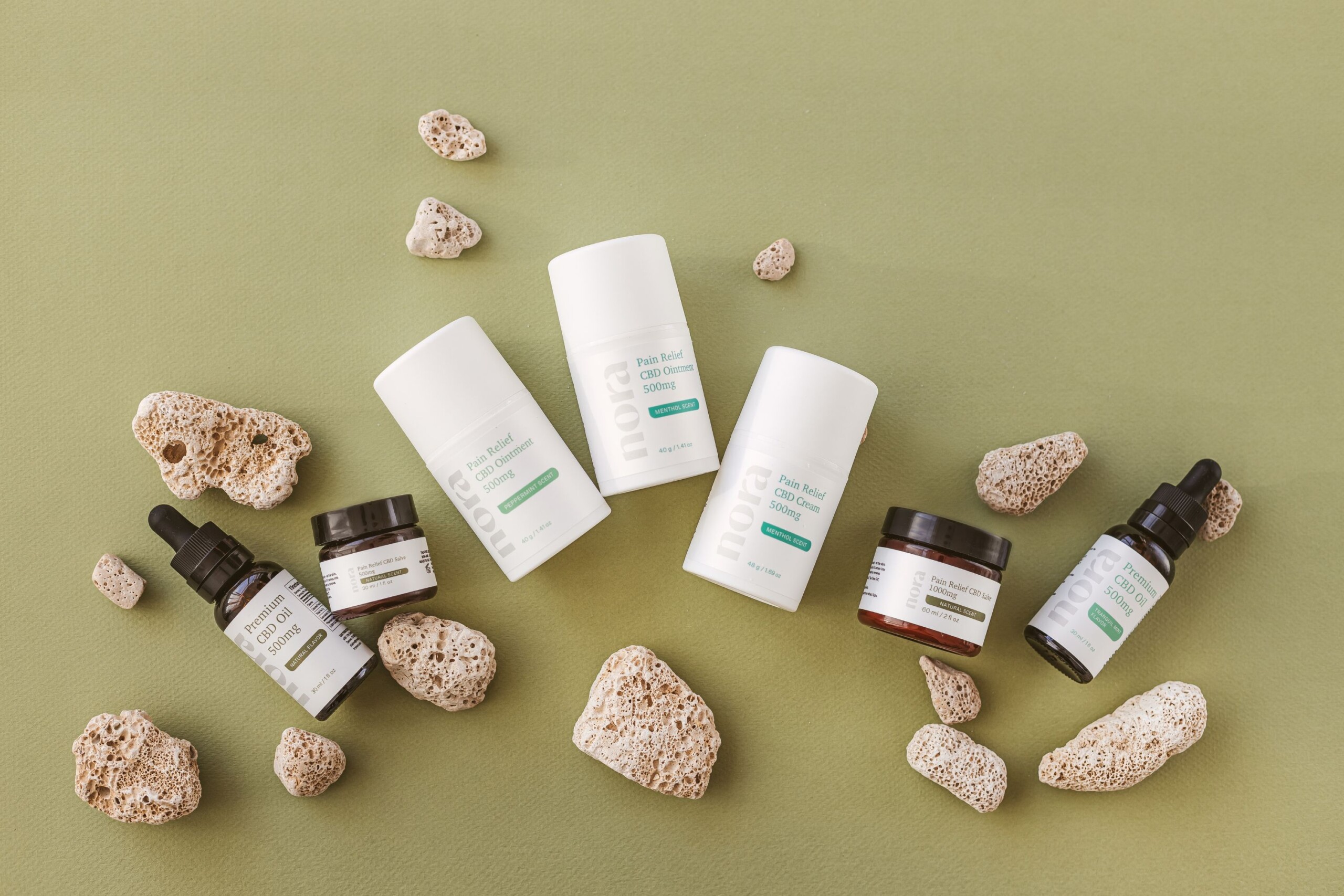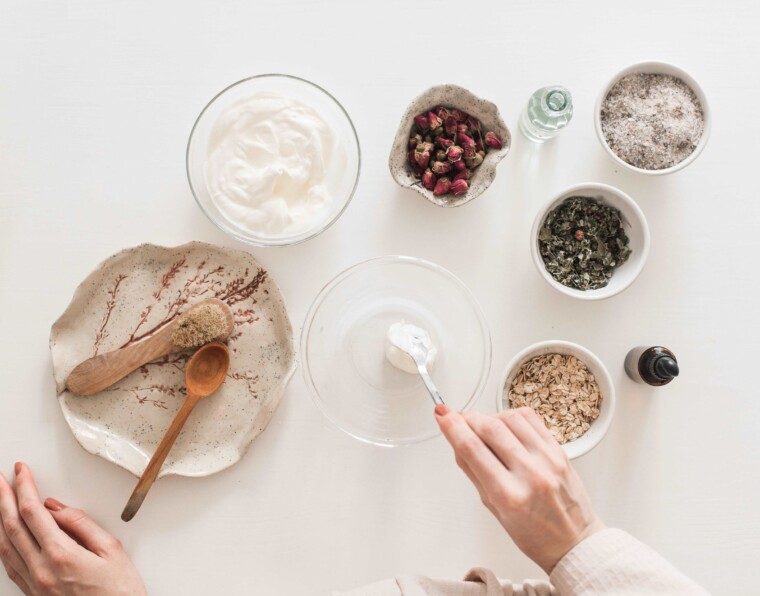It’s overwhelming to just purchase a new serum since there are so many skin-care products available, let alone figure out how it fits into your regimen. In actuality, however, learning the fundamentals of skincare layering is a terrific approach to make sure you’re getting the most out of your products and tailoring your regimen to your particular skin type.
In general, the following sequence should be followed while using products: cleanser, exfoliator, toner, essence, serum, eye cream, retinoid, moisturizer, face oil, and SPF. But before you bolt for the hills, let me emphasize that there is no set quantity of items you need to use. It’s totally up to you whether your regimen consists of two stages, three steps, or five steps; using additional items won’t always improve your outcomes. In fact, more experts are extolling the virtues of a basic, uncomplicated routine in the wake of the great quarantine skin care boom of 2020, when people binge ordered massive amounts of skin care from the comfort of their couches and sparked a national conversation about how to repair a damaged skin barrier. All of this is to say that the list above is not a rule that you must precisely go by; rather, it is a flexible guide to skincare layering that will give you a general idea of how products interact and absorb when applied on top of one another.
Skincare layering is not a one-size-fits-all strategy, even with the framework to refer to, and there are undoubtedly exceptions. I reached out to experts in the fields of dermatology and cosmetic chemistry to go further into some more specific topics. Therefore, if you’re unsure of the difference between a toner and an essence or if you’re wondering why some individuals use their retinoid after their moisturizer and others before, look no further.
Why is skincare layering important?
Because no one product can address all skin types and skin conditions, it is a good idea to create a customized skincare program. For example, you could benefit from using Vitamin C daily and a retinol every few days, but someone else would like to use them more often. A excellent technique to simultaneously treat many skin care issues is by layering skincare products.
Are there any golden rules about our skincare layering?
Applying your cosmetics should always be done from the thinnest to the thickest consistency. Any thin preparations, including as serums or liquid treatments, should be used first, according to experts. Before using any heavier creams, they may be properly absorbed by the skin in this manner. Thicker items act as a barrier that thinner products cannot cross. You will get the most usage out of each product and its contents if you adopt this method of application. If not administered properly, you risk effectively nullifying the advantages of the prior product you’ve used.
SPF should always be the last step in your morning skincare regimen. The SPF should be applied after the rest of your skincare layering, regardless of consistency, so that it is the first layer the sun will contact.
Which serum should be applied first?
Here, too, the same rule about texture is applicable. Examine the two serums’ consistency. Always use water-based treatments first, such as hyaluronic acid over vitamin C, vitamin A, or active products that are oil-based, says Daniel. Apply both textures to your hand to determine which is thicker if you’re uncertain.
The second thing to keep in mind is to apply the more active component first if the two consistencies are the same. Apply the most active component first when applying serums, and then choose the ingredient that will provide your skin the greatest benefits. For instance, use a salicylic acid serum if your main worries are acne and pimples; if it’s pigmentation, start with vitamin C.
Thirdly, certain serums function better at night than in the morning, and vice versa. Vitamin C and retinol are the two key substances to keep in mind. The optimum time to use vitamin C is in the morning since it has skin-protecting qualities that may help shield cells from pollution and other environmental variables that you could encounter during the day. Combining vitamin C with additional antioxidants, such as vitamin E, may improve outcomes and efficiency. Because retinol may make your skin more sensitive to sunlight and works best in the evening, you should apply them separately rather than simultaneously.
Skincare Layering: What ingredients shouldn’t be layered?
The formulae you’re employing will actually determine this. Because of advances in technology and formulating techniques, businesses may now blend components that would have previously been incompatible or irritating to one another. This is made possible by techniques like encapsulation and drone technology, which keep incompatible chemicals separate in tiny capsules and only release their contents when they have reached the proper location in your skin.
This will also be heavily influenced by how sensitive and how much your skin can take. However, since retinol and acids are both potent substances, using them together often causes skin irritation.
The holy grail of skincare compounds is retinol (Vitamin A), and although most skin types may benefit from its incredible skin-rejuvenating capabilities, it doesn’t work well with acids like AHAs and BHAs. This is due to the fact that they both exfoliate the skin’s outer layer. Combining the two might harm the skin’s moisture barrier and irritate and dry up the skin.
Similar to how retinol and benzoyl peroxide might be too harsh together. Although benzoyl peroxide’s anti-blemish qualities might dry out the skin, it really works by destroying the bacteria that causes acne and blemishes. Retinol’s advantages to the skin are negated by benzoyl peroxide, which may also irritate the skin when used simultaneously. Instead of increasing the discomfort level while using a product that is tingling but manageable and effective, pair it with soft follow-ups like a moisturizing vitamin E cream.
Skincare Layering Guideline
Based on Consistency
A decent rule of thumb is to classify a product based on consistency if it doesn’t fall into one of the categories listed above. Because smaller formulas may not be able to penetrate if a thicker, richer formula is applied first, this is related to absorption.
There are, of course, exceptions to the norm since this is life. No of its consistency, Jhin advises patients using a prescription medication to treat skin issues to use it immediately after cleanser, toner, and essence. This is because you want the active ingredients to have the greatest possible opportunity of penetrating the skin deeply in order to cure the skin disease.
The Last Step
Here’s even another unique circumstance: If you decide to use face oil, it should always be applied last. Oil is occlusive, which means it forms a barrier, which explains why. Oil may pass through lotions, serums, and moisturizers. However, it does not function the opposite way around. Nothing can pass through it if you coat it with oil. Therefore, you should apply it last.
Even so! However, there is an exception to that rule. While applying oil should come last in your evening routine, sunscreen, whether it’s a chemical or physical formulation, should come last in your morning routine. Other [products]… aim to penetrate the skin, be effectively absorbed, and reach the skin. But sunscreen acts as a defense. Because it prevents the sun’s rays from reaching the skin, you want it on top. No exclusions, with all seriousness.
Avoid these Ingredient Combinations
You should always (always!) see a dermatologist if your routine contains more than one active component to ensure that the substances may be combined safely. However, Jhin claims she often receives inquiries regarding these combinations:
Retinol and Vitamin C
Although you may combine these products, we advise waiting at least 30 minutes before using retinol on top of vitamin C. This is due to the fact that the two substances may not function as effectively when used together since they function best at different pH values (the measurement of acidity). However, you may take vitamin C in the morning (as it’s an antioxidant that helps protect skin from environmental stresses) and retinol in the evening instead of sitting about doing nothing for half an hour.
Vitamin C and AHAs
This combination could irritate some. So, think about taking vitamin C in the morning and AHAs at night.
Vitamin C and Benzoyl Peroxide
Whether they are star-crossed lovers or sworn adversaries, these two are incompatible. Vitamin C is degraded or oxidized by benzoyl peroxide, a substance often used to treat acne, making it ineffective. Wow, wow.
Benzoyl Peroxide and Retinol
Once again, the avenger of acne. The two should not be combined since they counteract each other.
FAQ
Q: How should I layer vitamin C and hyaluronic acid in my skincare routine?
A: When it comes to layering vitamin C and hyaluronic acid, it’s important to follow a specific order to maximize their benefits. Start by applying vitamin C serum onto clean, dry skin. Give it a few minutes to absorb before applying hyaluronic acid. Hyaluronic acid is a humectant that helps to lock in moisture, so applying it after vitamin C allows it to work effectively. Finally, follow up with your moisturizer to seal in the hydration.
Q: Can I use two serums at the same time?
A: Yes, you can use two serums at the same time, but it’s important to consider their compatibility and the specific needs of your skin. To avoid overwhelming your skin or potential interactions, it’s generally recommended to choose serums with different active ingredients. For example, you could combine a vitamin C serum with a hyaluronic acid serum, as they target different concerns. However, if you have sensitive skin or are unsure about compatibility, it’s best to consult with a dermatologist or follow the instructions provided by the skincare brand.
Q: What is the thumb rule in skincare?
A: The “thumb rule” in skincare refers to a general guideline or principle that can help you make informed decisions regarding your skincare routine. While there isn’t a specific thumb rule that applies to all situations, some common guidelines include:
Consistency: Consistency is key in skincare. It’s important to follow a regular skincare routine to maintain healthy skin.
Patch Test: Before introducing a new product, perform a patch test on a small area of skin to check for any adverse reactions or allergies.
Sun Protection: Always use sunscreen with broad-spectrum protection, even on cloudy days, to shield your skin from harmful UV rays.
Cleanse and Moisturize: Cleanse your face twice daily to remove dirt, oil, and impurities. Follow up with a moisturizer to hydrate and protect your skin.
Tailor to Your Skin Type: Understand your skin type and choose products that address your specific concerns, whether it’s dryness, acne, sensitivity, or signs of aging.
Remember, these are general guidelines, and it’s essential to listen to your skin’s needs and consult with a skincare professional for personalized advice.
Q: Should I put retinol or serum first?
A: When incorporating both retinol and serum into your skincare routine, the general recommendation is to apply the serum first and allow it to absorb fully before applying retinol. Serums typically have a lighter consistency and contain a higher concentration of active ingredients, so applying them first ensures they can penetrate the skin effectively. After the serum has absorbed, apply a pea-sized amount of retinol (if using) to clean, dry skin. This order allows the retinol to work its magic without any potential dilution from the serum. However, it’s important to note that retinol can be potent and may cause skin sensitivity, so start with a low concentration and gradually increase usage over time. If you have any concerns or specific instructions from a skincare professional, it’s best to follow their guidance.



